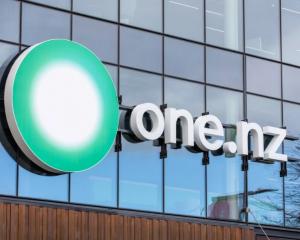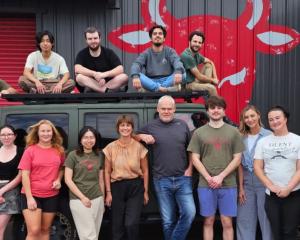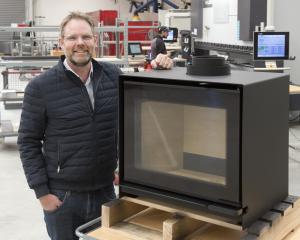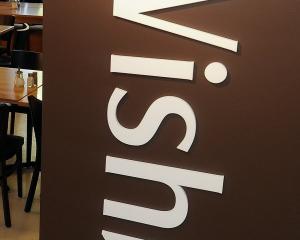Having been under a cloud for the past 18 to 24 months because of surging energy costs, job losses, low gold prices and a strong New Zealand dollar, Oceana has several opportunities under way or coming to fruition this year.
Crucially, Oceana's annual cash cost to produce an ounce of gold, which is kept exceptionally low by the sale of its copper by product from Philippine operations, appears set to continue this year.
Oceana's presentation last week at its annual shareholders' meeting made no mention of its $US100million ($NZ143.3million) cost cutting programme during the past 18 months.
However, it outlined numerous new exploration programmes at Macraes, ultimately targeting further mine life extensions, and updated investors on most of its assets and developments.
Craigs Investment Partners broker Peter McIntyre said Oceana had proven to be ''masters at extracting value'' from gold assets.
Overall, gold production was beyond guidance last year, at 307,463oz.
Didipio, in the Philippines, last year produced 106,256oz of gold and 25,010 tonnes of copper and for the first quarter this year produced 35,122oz and 6102 tonnes respectively.
While the company is still considering mothballing its Reefton open pit operation on the West Coast at the end of the year, it has boosted exploration at Macraes to $US8million and pared back costs at Didipio, reducing the open pit size and focusing on getting underground operations started.
Mr McIntyre said the early buy in and then startup phases of Didipio, which became stalled, reflected how new projects were not without their risks.
However, it was Didipio's offsetting copper sales that were underpinning its large free cash flows, which in turn were being used to pay off debt and also ''take some more risks'' in buying into exploration in El Salvador and Nevada.
Total debt during the past three calendar years has been reduced from $US267million in 2012 to $US194million in 2013 and further down to $US118million in 2014, by the retention of $US60million cash in hand and $US97million in undrawn revolving bank credit facility. Debt of $US77.4million was paid off last year.
While not formally restating its annual guidance for gold production during calendar 2015, which is 295,000oz 335,000oz, Oceana's presentation offered a peer to peer cost comparison, with estimated production from its combined South Island and Waihi mines at more than 250,000oz.
The copper impact is best reflected in Philippine alone costs being $US420 per ounce of gold, being more than offset by the sale of 25,886 tonnes of copper, while New Zealand alone would be $US862. Mr McIntyre said while copper, like all commodities, could be volatile, prices were steady at the moment and its outlook strong.
''If there was a [financial crisis] meltdown, then there would be an impact on profitability,'' he said.
Oceana's cash cost to produce an ounce of gold remains one of the cheapest in the world, coming in at $US418 last year for combined New Zealand and Philippine production. Many of its competitors have a range of $US800 $US1100 per ounce.
Global spot gold prices touched a high of $US1300 in late January and for the past four months have been trading in a range of $US1180 to $US1220.
Mr McIntyre said gold appeared to be ''range bound'' at present and whenever it made a breakthrough to $US2000, it quickly pulled back.
While the weakening New Zealand dollar was advantageous at present, he cautioned it would be the future strength of the US dollar that would have most impact on where spot gold prices went.
However, Oceana's ''hedging collars'' covering its New Zealand gold production were working well, he said.
Oceana is still considering the viability of a combined gold tungsten project at Macraes, with its scoping study still under way. Oceana's $US132million purchase of Newmont's Waihi gold, although still subject to regulatory conditions, includes plans to expand operations.
Noting it was a mine with a century of production behind it, and within a highly prospective mineral system, Oceana said it wanted to expand the resource base at Waihi, which stands at an estimated 360,000oz at present.
Forecast average annual production to 2018 has been set about 100,000oz.
Oceana has not predicted what Waihi's contribution will be but, as it is a low cost mine, it expects the additional gold contribution will lower its ''all in sustaining cost'' of production.
In what should further reduce Philippine costs, Oceana is scheduled to switch from diesel generators to national electricity grid supply before the end of the year.
Oceana is continuing to assess the viability of the historic Blackwater mine near Reefton, and is reviewing mining methods and the extent of capital expenditure required.
In the first quarter this year, New Zealand operations generated $US13million free cash flow, while there were ''strong profit margins'' booked from Reefton, due to a reduction in the amount of ore mined.
Oceana did not give any costed details of its intentions with the companies in Nevada and El Salvador.












